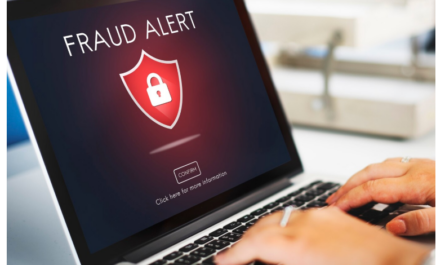In today’s fast-paced world, owning a car has become a necessity for many individuals. However, buying a car outright can be a significant financial burden for most people. This is where the option of purchasing a car on Equated Monthly Installments (EMI) comes into play. In this blog, we will guide you through the process of buying a car on EMI, covering everything from choosing the right car to financing options and the application process.
Choosing the Right Car:
The first step in buying a car on EMI is to decide on the type of car you want to purchase. Consider factors such as your budget, the purpose of the car, and your preferences in terms of brand, size, and features. Whether you are looking to buy a new car or a used car on EMI, it is essential to research different models and compare prices to find the best deal that fits your requirements.
Financing Options:
There are various financing options available for buying a car on EMI. You can opt for a car loan from a bank or financial institution, or choose to finance your purchase through the dealership itself. Another popular option is to use a credit card with EMI conversion facility. Airtel Finance offers an easy way to apply for an Airtel Axis Bank credit card through the Airtel Thanks App. Simply download the app, navigate to the ‘shop’ category, select ‘credit card’ under ‘Financial Services’, complete the form, provide the necessary KYC information, and expect your credit card to be delivered within 24 hours.
Also Read: What is current outstanding meaning in credit card?
Factors to Consider:
When buying a car on EMI, it is important to consider the total cost of ownership, including the down payment, monthly EMI amount, interest rate, and loan tenure. Make sure to read the terms and conditions of the financing agreement carefully to avoid any surprises later on. Additionally, factor in other costs such as insurance, maintenance, and fuel expenses to ensure that you can afford the car in the long run.
Application Process:
Once you have decided on the car you want to buy and the financing option you wish to proceed with, the next step is to start the application process. Whether you are applying for a car loan or using a credit card for EMI conversion, you will need to provide certain documents such as proof of identity, address, income, and bank statements. Be prepared to undergo a credit check as part of the approval process.
Also Read: Difference Between American Express Vs Mastercard
Negotiating the Deal:
Before finalizing your purchase, it is advisable to negotiate the terms of the deal to ensure that you are getting the best possible price and financing terms. Compare offers from different lenders or dealerships to see if you can secure a lower interest rate or better repayment terms. Don’t be afraid to walk away if the deal does not meet your expectations.
Finalizing the Purchase:
Once your financing is approved and the deal is negotiated to your satisfaction, it’s time to finalize the purchase. Sign the necessary paperwork, make the down payment, and arrange for the delivery of your new car. Remember to keep a copy of all the documents related to the purchase for your records.
Conclusion:
Buying a car on EMI can be a convenient and affordable way to own a vehicle without putting a strain on your finances. By following the steps outlined in this guide and considering the factors mentioned, you can make an informed decision and drive away in the car of your dreams. Whether you are looking to buy a new car or a used car on EMI, careful planning and research will help you make the right choice. Start your journey towards car ownership today and enjoy the freedom and convenience that comes with having your own vehicle.
By following these simple steps and considering the financing options available, you can make the process of buying a car on EMI smooth and hassle-free. Take advantage of Airtel Finance’s credit card facility through the Airtel Thanks App to simplify your application process and get one step closer to owning your dream car. Happy driving!
Also Read: What is credit card limit?

FAQs:
Can I buy a used car on EMI?
Yes, you can buy a used car on EMI. Many financial institutions offer financing options for purchasing pre-owned vehicles. Make sure to check the terms and conditions of the loan or credit card EMI conversion facility to understand the eligibility criteria and documentation required for buying a used car on EMI.
What is the difference between a car loan and buying a car on EMI?
A car loan is a specific type of loan designed for purchasing a vehicle, where you borrow a lump sum amount and repay it in fixed monthly installments. Buying a car on EMI, on the other hand, can refer to financing the purchase through a credit card with EMI conversion facility or opting for dealership financing, where the payments are spread out over a period of time with added interest.
How long does the approval process take for a car loan or credit card EMI conversion?
The approval process for a car loan or credit card EMI conversion can vary depending on the lender or financial institution. Generally, it may take a few days to a couple of weeks for your application to be processed, including the verification of your documents and creditworthiness. With Airtel Finance’s credit card facility through the Airtel Thanks App, you can expect your credit card to be delivered within 24 hours upon approval.
Can I prepay my car loan or EMI amount before the tenure ends?
Yes, most lenders allow borrowers to prepay their car loan or EMI amount before the tenure ends. However, it is important to check the prepayment terms and conditions to understand if there are any penalties or charges associated with early repayment. Prepaying your loan can help you save on interest costs and reduce the overall loan burden.
What happens if I miss an EMI payment?
Missing an EMI payment can have consequences such as late fees, a negative impact on your credit score, and potentially repossession of the vehicle in case of default. It is crucial to communicate with your lender or financial institution in case you anticipate difficulty in making a payment and explore options for restructuring the repayment schedule. Always prioritize timely payments to maintain a good credit history and avoid financial setbacks.



